 |
| Bryce Stowell (Photo: Lianna Holub) |
There has been a lot of confusion over who is eligible and who the Indians might lose in the draft. For those who don’t know how it works and want to get more info on it, take a look at the FAQ and 2011 eligibles. I wanted to quickly just touch on the monetary side of the draft. If you select a player you must pay his team $50K for the selection. If that player does not make the team’s 25-man opening day roster then he can be returned to the original team if the original team is willing to pay a $5K return fee.
This article is an eight year look back at the Rule 5 drafts to help give an idea of who typically gets taken in the draft. I tried my best to locate every trade, but I admit I might have missed one or two as many of these players have little or no information on them thanks to the fact that few of them actually play any significant time in the Majors.
One thing to keep in mind is that when I talk of trades I mean trades where teams work out a deal to keep a player they selected and send him to the minors. I am not counting deals where Rule 5 selections are traded on draft day. In addition, I list a player as a starting pitcher (SP) if that was what he primarily did the season before in the minors. Most pitchers even when a SP in the minors are going to be a middle reliever (MR) if they get taken in the Rule 5 draft.
2003
In the 2003 Rule 5 Draft there were a total of 20 selections, only 7 of which were kept (roughly 1/3). There was one trade which most Indians fans will remember: the Indians traded a selected player, Willy Taveras, along with Luke Scott for Jeriome Robertson. While a stinker of a deal now, I can’t fault the Indians for trading for a lefty coming off a 15 win season in a hitter’s park. The breakdown of players selected in the draft is as follows:
SP: 1 (5%)
MR: 12 (60%)
C: 0 (0%)
1B: 1 (5%)
MR: 12 (60%)
C: 0 (0%)
1B: 1 (5%)
2B: 0 (0%)
SS: 2 (10%)
3B: 0 (0%)
UTIL: 2 (10%)
OF: 2 (10%)
Indians selected: 4 (20%)
The four Indians selected in the draft were Willy Taveras, Hector Luna, Lino Urdaneta, and Matt White. Of these players only Luna was not offered back to the Tribe. The biggest names selected in the draft were either Taveras, Matt White, or Chris Shelton to Detroit. In other words, it’s not like any All Stars were taken that year. White’s name is only well known because he is baseball’s first billionaire player, thanks to buying land and finding out it was worth over $2 billion and not cause his 7 games of big league play. I have listed the category of a utility player here for the first time – this is a player who logs 50 or more games at multiple infield positions.
Now for the information on levels:
MLB: 2 (10%)
AAA: 6 (30%)
AA: 10 (50%)
A+: 2 (10%)
Teams seemed to take the biggest risks with utility players and middle relievers when they reached down to AA. Luna and Gonzales were both players who spent a full year in AA. The two players taken from high A were Taveras and Bautista, both had logged a lot of time in high A and came with sold pedigrees. Taveras was the Indians 4th ranked prospect in 2001 and Bautista was the 7th ranked prospect in 2003.
2004
In the 2004 Rule 5 Draft there were 12 players selected and of those only 3 were kept. There were no deals and the Indians did not have any players selected. The breakdown this year was:
SP: 3 (25%)
MR: 5 (42%)
C: 0 (0%)
1B: 0 (0%)
MR: 5 (42%)
C: 0 (0%)
1B: 0 (0%)
2B: 0 (0%)
SS: 0 (0%)
3B: 1 (8%)
UTIL: 0 (0%)
OF: 3 (25%)
Of the players kept, the player who hasn’t gotten much publicity is Andy Sisco, someone people made a big deal of when he was first drafted but who has really failed to do much since then. The best player selected in this draft was Shane Victorino, but he was not actually kept. Victorino could not make the Philly squad, but the Dodgers didn’t want to pay the money for the return fee so Philly was able to keep him. It’s undoubtedly a mistake the Dodgers regret to this day as the return fee is virtually nothing. Another name of note is Tyler Johnson who was a solid reliever for the cardinals the year they won the World Series, but has since suffered an injury which derailed his career.
Now for the information on levels:
MLB: 1 (8%)
AA: 5 (42%)
A+: 4 (33%)
A-: 1 (8%)
R: 1 (8%)
Victorino was the one player with MLB experience. The players taken from the low levels where Andy Sisco who was a 6’10” lefty, Angel Garcia a 6’7” righty, and Marcus Carvajal who was a reliever. Sisco and Carvajal both stayed with their teams for the year working out of the pen.
2005
In the 2005 Rule 5 Draft there were again 12 selections and only 3 players kept. There were also no trades and zero Indians selected. The breakdown this year was:
SP: 2 (17%)
MR: 8( 67%)
C: 0 (0%)
1B: 0 (0%)
MR: 8( 67%)
C: 0 (0%)
1B: 0 (0%)
2B: 1 (8%)
SS: 0 (0%)
3B: 0 (0%)
UTIL: (%)
OF: 1 (8%)
The big player that was selected during this year was Dan Uggla, who moved from Arizona to Florida. Another interesting aspect of this draft was pitcher Victor Santos who was selected, stayed on roster all year, and then was cut after the season was over. Now three years into this review we see that the draft is dominated by MR arms, specifically players who were MR in the minors.
Now for the information on levels:
MLB: 2 (17%)
AAA: 6 (50%)
AA: 1 (8%)
A+: 3 (25%)
The big name from this draft Uggla was a player who had repeated AA. The rest of the players where more of a who’s who of the typical Rule 5 pick, that being a reliever who fails to do much.
2006
This year there was a rise in both players selected and kept. There were 19 players taken and 4 kept, but the percentage of players kept dropped to 21%. There were also two trades that happened this season. The first player taken was an Indian, Ryan Goleski, but I am sure Oakland wishes they had taken Josh Hamilton instead. Here is the breakdown for the draft:
SP: 1 (5%)
MR: 10 (53%)
C: 3 (15%)
1B: 1 (5%)
MR: 10 (53%)
C: 3 (15%)
1B: 1 (5%)
2B: 0 (0%)
SS: 0 (0%)
3B: 0 (0%)
UTIL: 2 (11%)
OF: 2 (11%)
Indians selected: 2 (11%)
This is the most interesting draft in this five year cycle because not only were there two Indians taken, but two future All-Stars were also selected. The two Indians were Ryan Goleski and Jim Ed Warden, both of whom were returned to the Tribe. The All-Star players that year were Josh Hamilton and Joakim Soria. Both players were surprise picks at the time but have since looked like genius moves. Hamilton had been so long out of the game and Soria had never played above A ball. They were both well thought of and ended up being the 2nd and 3rd players selected in the draft. This draft should also be noted for the solid relievers that it turned out with players such as Jared Burton, Kevin Cameron, and Sean White, thus meaning that over a quarter of this draft ended up being productive. 2006 might go down as the best draft ever for the Rule 5 just in terms of results.
Now for the information on levels:
MLB: 2 (11%)
AAA: 4 (21%)
AA: 9 (47%)
A+: 3 (16%)
A-: 1 (5%)
The lowest player selected was Soria, but it should be pointed out that he had been pitching in the Mexican League that year and faced a better level of competeion early on. San Diego owned his rights and tried to stash him and failed after they had signed him out of Mexico after he left the Dodgers organization. Josh Hamilton actually counts as a AA player. I know the stories tell about low A, but he had some time in AA in the years before 2006. The three relievers I mentioned before were all at AA, as were both of the Indians losses that year. I must say I think 2006 was a year with a clear loser in Oakland as not only did they draft the wrong player first and pass on two All Stars, but then they lost a solid reliever in Burton and ended up with nothing to show for any of it.
2007
The 2007 draft saw a total of 18 players drafted, and of those only 3 were kept. Once again the percentage of players kept this time was around 17%. In terms of trades there were a total of four, so a lot more players were able to stay with the team that selected them. There were two Indians selected and one of them, Brian Barton, was one of the players kept. Here is the breakdown:
SP: 2 (11%)
MR: 12 (67%)
C: 0 (0%)
1B: 0 (0%)
MR: 12 (67%)
C: 0 (0%)
1B: 0 (0%)
2B: 1 (5%)
SS: 0 (0%)
3B: 1 (5%)
UTIL: 0 (0%)
OF: 2 (11%)
Indians selected: 2 (11%)
With this draft there was no marquee name. It can be argued that Barton did the most of any player that was kept as the other two were middle relievers that didn’t show much. Once again the draft was dominated by guys that teams take a flier on to see if they can help the pen. After all, $50K is cheaper than even the minimum free agent contract.
Now for the information on levels:
MLB: 1 (6%)
AAA: 7 (37%)
AA: 7 (37%)
A+: 2 (11%)
A-: 1 (6%)
In 2007 there was a huge switch to relievers in the higher levels. Of the players taken from the lower levels all were returned. Teams seemed a lot more hesitant to take a risk on a player who was farther away.
2008
The 2008 draft saw a lot of players selected with a total of 21 taken. Even after all of the fear Cleveland fans had that year not one of the players taken came from Cleveland. Four players lasted the whole year with their new team or roughly 20% of the players, it should be noted one of the players though had Tommy John surgery and that’s why he was able to be kept. There was one trade with Minnesota gaining starting pitcher Justin Jones. Also 4 players were out right waived and one of them is now in the Independent leagues. Here is the breakdown:
SP: 5 (24%)
MR: 11 (53%)
C: 2 (10%)
1B: 0 (0%)
MR: 11 (53%)
C: 2 (10%)
1B: 0 (0%)
2B: 0 (0%)
SS: 0 (0%)
3B: 0 (0%)
UTIL: 2 (10%)
OF: 1 (5%)
Indians selected: 0 (0%)
The most successful player was Everth Cabrera who San Diego selected with the third pick from Colorado. He showed a mix of speed and doubles pop which at worst would make him a solid utility player for years to come. While there was a rise in starting pitchers taken, the draft was still dominated by the middle relievers.
Now for the information on levels:
MLB: 1 (5%)
AAA: 4 (19%)
AA: 11 (53%)
A+:5 (25%)
As it is most years, the majority of players taken are players who are in AA. The reason for this is simple: if you are successful in AAA, then you are more than likely protected. If you’re in AA and eligible for the Rule 5 Draft then somewhere along the way you had a hiccup. Maybe you repeated a level or got hurt, but either way it slowed your development. Teams try and find those players who could help them from those who have had a slower development cycle.
2009
The 2009 draft saw a drop in players taken with only 17 players selected. The very interesting thing about 2009 was the number of deals that occurred as parts of other deals. For instance the first pick in this draft was traded to the Yankees as the player to be named later from an earlier Brian Bruney deal, this also happened between Houston and Florida and Baltimore and Texas. In all cases these players was later returned to their original team. This was the lowest total since 2005. Cleveland had only one player selected, Chuck Lofgren, who the Indians worked out a deal so Milwaukee could keep him in exchange for hard throwing but wild reliever Omar Aguilar. This was the only deal that occurred so a team could keep a player it selected.
Two players lasted the whole year with their new team or roughly 11% which is another number that is lower than normal as it usually is in the 16-22% range. One of two players was Hector Ambriz, who was chosen by the Tribe and recently was removed from their 40 man roster thanks to injury. Three players were waived, and their original team declined to pay the return fee for them. Here is the breakdown:
SP: 6 (35%)
MR: 8 (47%)
C: 0 (0%)
1B: 0 (0%)
MR: 8 (47%)
C: 0 (0%)
1B: 0 (0%)
2B: 0 (0%)
SS: 0 (0%)
3B: 1 (6%)
UTIL: 0 (0%)
OF: 2 (12%)
Indians selected: 1 (6%)
In terms of success there are really only three choices. Hector Ambriz of the Indians, which I am sure no Tribe will be shocked to hear was not the most successful of the chosen players. The other two choices are David Herndon who was the last choice and managed to stay the whole year on a very good Phillies team. The other choice is Kanekoa Texeira who was drafted by Seattle, then waived and spent the rest of the year with KC. In the end the player who had to have made the bigger impact is Herndon. He pitched for a good team and had a 4.30 ERA, but his WHIP was unsustainable high, so I don’t expect him to be able to keep up the same level of success.
Now for the information on levels:
MLB: 2 (12%)
AAA: 6 (35%)
AA: 7 (41%)
A+: 2(12%)
As it is most years the majority of players taken are players who are in AA. The difference in this case is that there were almost as many AAA players as AA players. The gap between the levels was a lot closer that year in terms of talent taken.
2010
Last year was a very interesting year for the Rule 5 Draft. We saw 19 players taken just like the year before, and on top of that the top two picks were both Indians. Jose Flores also started out a new trend last year, where we saw players taken from low A. It was the most players taken from low A and also the most players selected from A ball that we have seen in this sample size. It means teams are reaching lower to try and find an arm that can help them, looking to maybe find the next Soria. Of the 19 picks 5 made it without being offered back or 26% of the players chosen which is also higher than usual. The amount of trades were also up as 4 players including the Indians own Josh Rodriguez was traded.
SP: 6 (32%)
MR: 10 (53%)
C: 0 (0%)
1B: (0%)
MR: 10 (53%)
C: 0 (0%)
1B: (0%)
2B: 0 (0%)
SS: 0 (0%)
3B: 0 (0%)
UTIL: 3 (16%)
OF: 0 (0%)
Indians selected: 2 (11%)
As mentioned before this was interesting for Tribe fans as the top two picks came from the Indians. The most successful player was actually the pick right after them as Joe Patterson became an important lefty for the Diamondbacks pen. Mason Tobin is interesting as he had pitched in only 3 games the previous two years (thanks to Tommy John Surgey) and had not been higher than A ball, yet he still ended up lasting the season. One other player that should be pointed out is Pedro Beato, who might be a familiar name to some. He was once considered one of the top 100 prospects in baseball by Baseball America and was a solid pen arm for the Mets. Of the 4 players to make it three were pen arms, and the only bat was Michael Martinez, a 27 year utility player. So of the 4 players chosen three of them were on playoff teams proving good teams can still find help in this draft.
Now for the information on levels:
MLB: 0 (0%)
AAA: 8 (42%)
AA: 5 (26%)
A+: 3(16%)
A-: 3 (16%)
The trend here is the teams willing to spend $50K and take a risk on a low level arm. This is a trend that I think could hurt the Indians long term as the Indians have a lot of promising arms in the lower levels who are eligible. The other interesting change is that this shift comes at the expense of AA where in the past the majority of players had been taken. The data shows to me that the Indians might need to be more worried about losing highly projectable arms or near ready arms instead of just a solid pitcher in AA.
8 year total
Now, if the data from the past eight years is added together, it is possible to see who and what a team like the Indians could lose. In the eight year cycle there were 138 players selected and a total of 31 kept, so roughly only 22% of all players selected stick. The average amount of players selected every year is 17, which basically means an average of four players leaving teams. In that same time there were 13 trades. Of these trades four of them occurred last year, which shows a distinct change where teams are now willing to trade their prospects.
SP: 26 (19%)
MR: 76 (55%)
C: 5 (3%)
1B: 2 (1%)
MR: 76 (55%)
C: 5 (3%)
1B: 2 (1%)
2B: 2 (1%)
SS: 2 (1%)
3B: 3 (2%)
UTIL: 9 (7%)
OF: 13 (9%)
Indians selected: 11 (8%)
What this data shows (at least to me) is that the main use of the Rule 5 Draft is to find bullpen help. I mean, there were more relievers taken then every other position combined. There are also a decent amount of outfielders, utility players and starting pitching selected, but by and large the draft is dominated by bullpen help. It is a bit disturbing to see 8% of all players selected come from the Indians, but even so a vast majority of those players have been returned so the Indians have actually just gained a lot of cash in exchange for their players being selected.
MLB: 11 (8%)
AAA: 41 (30%)
AA: 55 (40%)
A+: 24(17%)
A-: 6 (4%)
R: 1 (1%)
So almost 80% of all selections have played AA ball or higher. It certainly makes sense for this to be the case because in most cases there has to have been injury or production issues to cause a player of Major League value to have risen to at least the AA level by the time they are eligible. Still players are taken from the lower levels, and teams are willing to risk a spot for talent.
Right now the depth of the Indians system is the bullpen arms they have accumulated. This puts the Indians as a team to look at when the Rule 5 Draft occurs because there are too many arms to protect. The two names that are often talked about the most are Bryce Stowell and Rob Bryson.
Stowell's velocity alone is exciting, though so was Neil Wagner and we ended up cutting bait with him (though he did make it to the majors with the A's this year). The issue with Stowell is his control is horrid as he has never cut down on his walk rate as he has risen up through the minors. You can't average 5 walks per nine innings and be a Major League pitcher. It just won't happen as big league hitters will destroy you. So unless he gains control and turns into Rick Vaughn, I am not sure he is even a viable bullpen option to select.
Rob Bryson is another issue. He was once thought to be arguably the second best piece in the CC deal. Then he got hurt. He has a great strikeout rate, and this would lead one to think he would be a perfect fit yet there is of course one issue. The issue for him is the same as for Stowell since he walks too many guys. He is not as bad as Stowell, yet all the same it is an issue. Bryson should be a big leaguer, but he might just be a guy who gets the yo-yo treatment back and forth between the big leagues and AAA. He seems like a candidate who could be stashed away by a team, and I think there is a good chance he gets selected.
I also want to mention a few more sleeper type guys to worry about. T.J. McFarland is a lefty who has started to turn a corner. Lefties always have value and some team might want to take a risk on a guy with a high draft profile who is left-handed. Paolo Espino has been a performer at every level in any role asked of him. He might never be more than a long man, but he could still be useful to other teams.
One more point, with the change we saw last year with teams taking a risk on talent and not caring about the level they were at might put two players at risk. Alexander Perez two years ago looked like the future of the Indians' minor league system, but then injuries slowed him. The talent is there but I don't think he has shown enough recently to worry about him.
This leads to the player I would be most upset to see taken, and one I do worry about which is Elvis Araujo. He has had injury issues as well, but he was the third best prospect in the Arizona League according to Baseball America. He will be in most people's top ten rankings (third in my own), and has the frame to really add more velocity as he gets stronger. He has very little in terms of stateside stats because of injuries, but the arm is more than a little intriguing and might be enough for a team to take a risk. This is still not likely, but just something to keep in mind based on the trends of last year.
Bottom line, the Rule 5 can be much ado about nothing, but it is still interesting. Plus last year proved it is a place where talent can be found even for teams that will be contending.









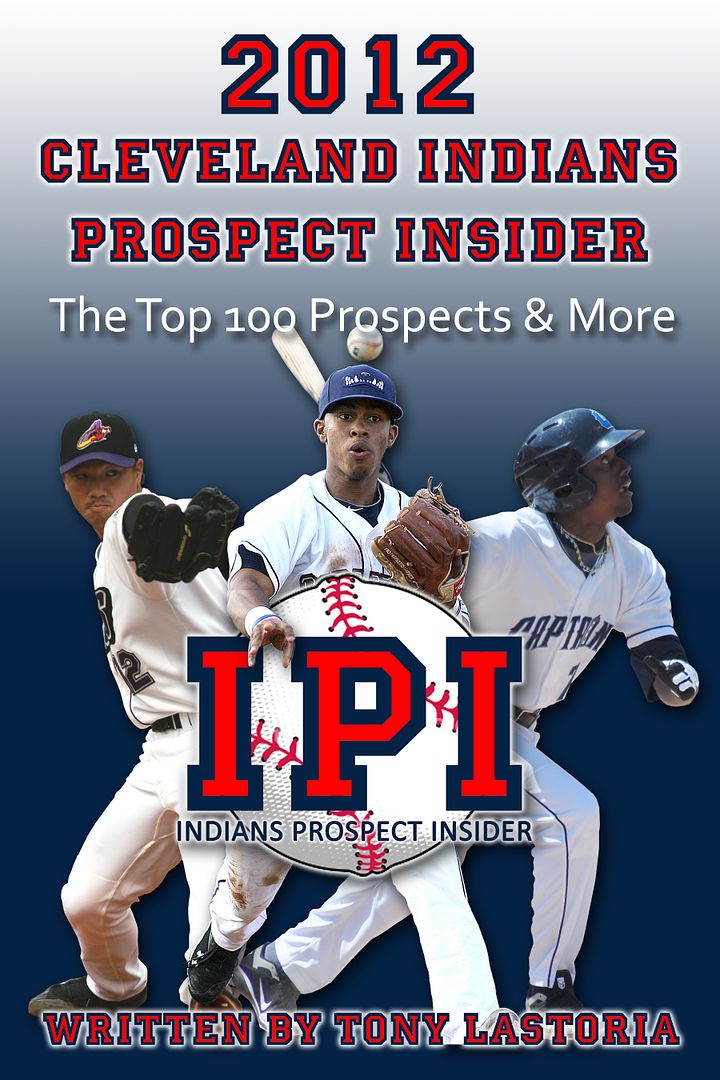
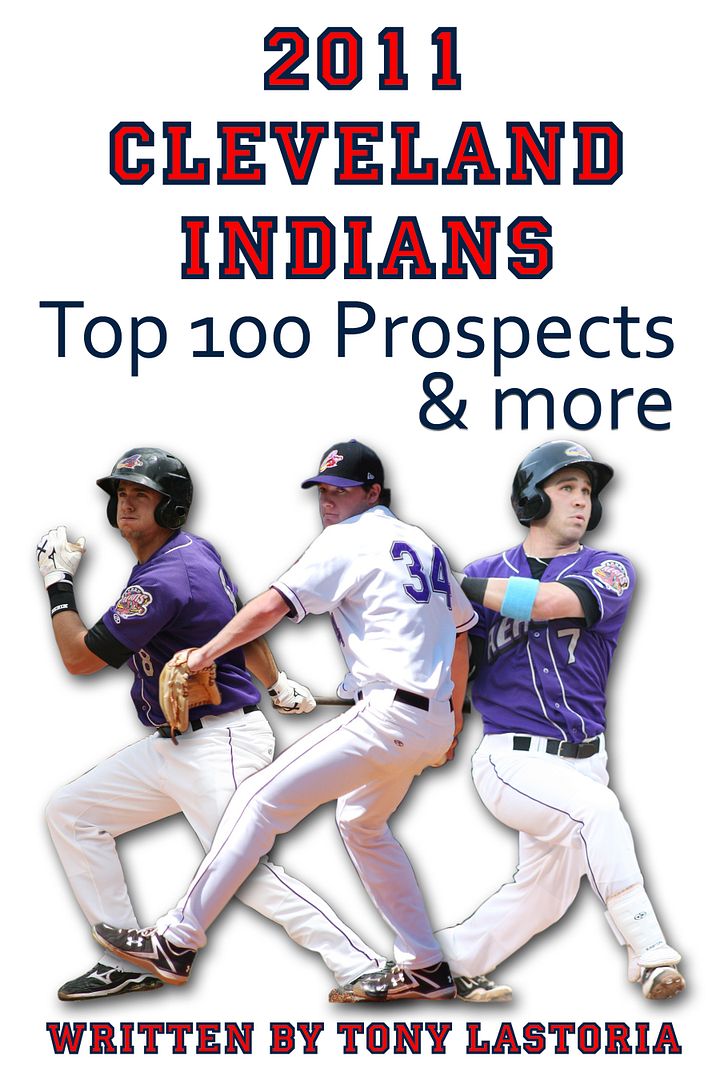
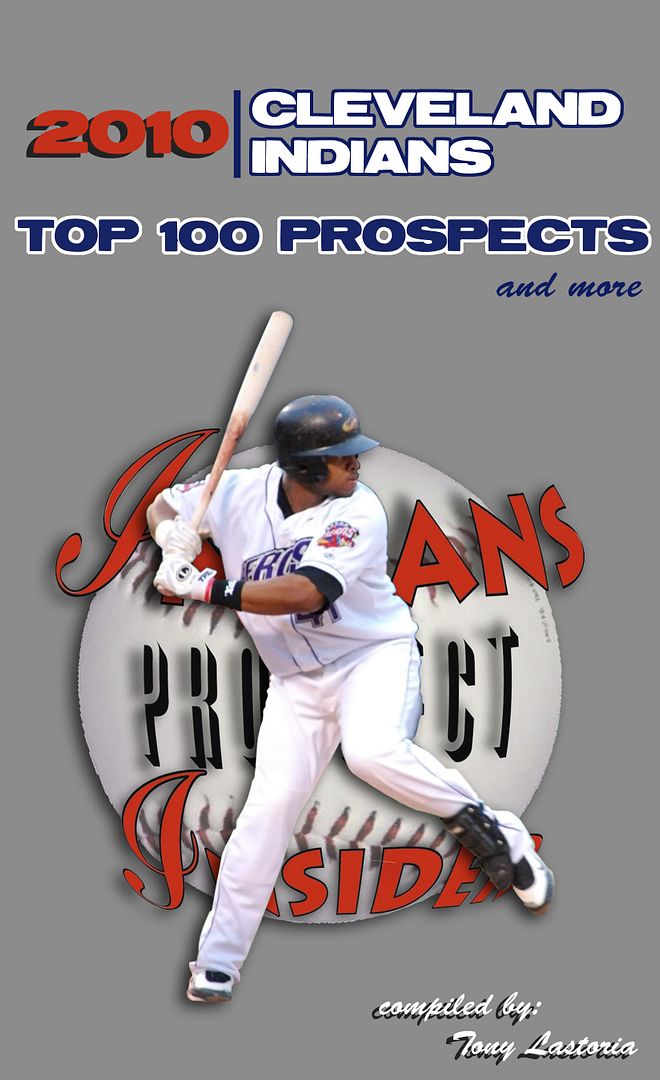
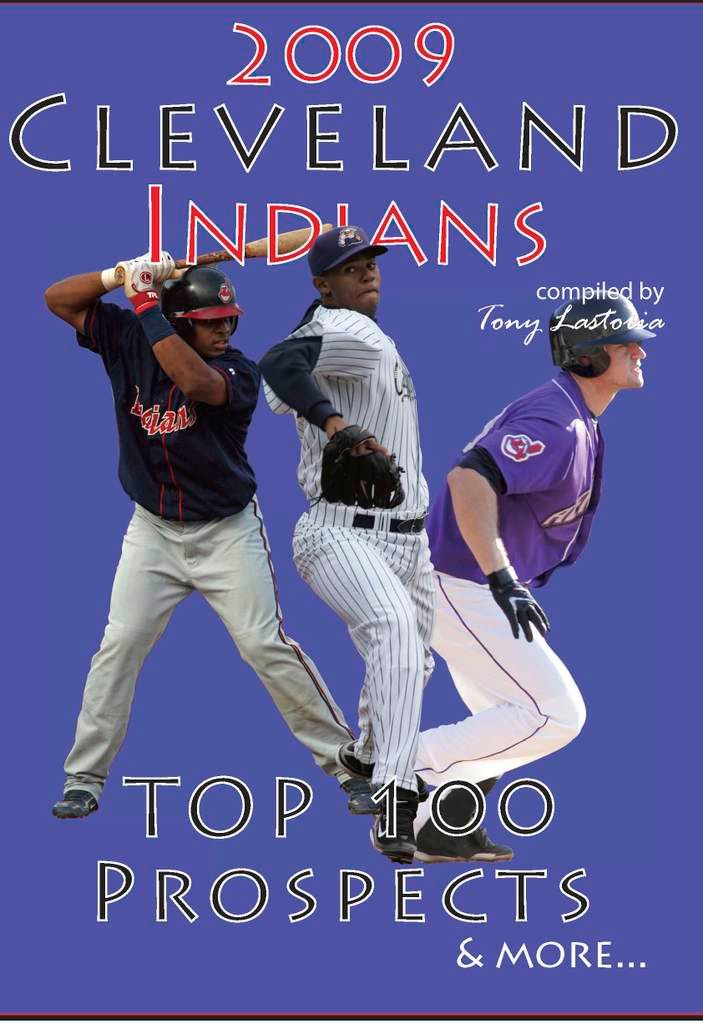
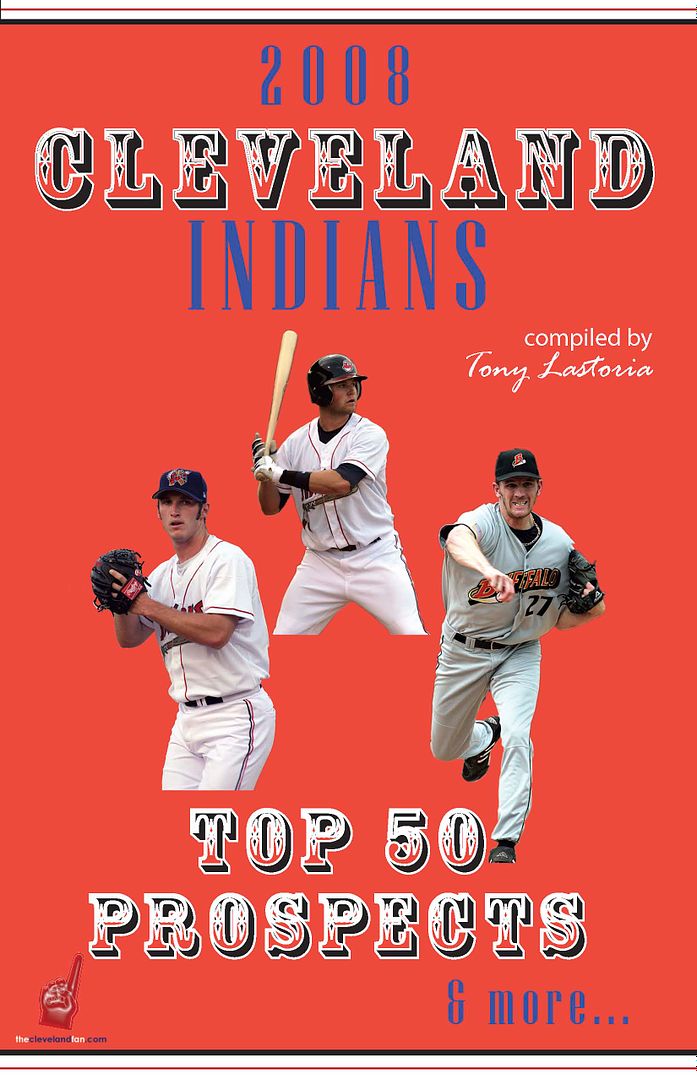
 Everything on this site is free, but for those interested in making any monetary contributions to help support the stability and growth of this site please click on the "Donate" button below.
Everything on this site is free, but for those interested in making any monetary contributions to help support the stability and growth of this site please click on the "Donate" button below.


2 comments:
Hello Tony,
Great article as usual - that was an interesting look back at the Rule 5 Draft (Some I remember, but much of it not so much).
One point you made which might explain why the Indians were willing to protect Salazar and not McFarland:
"The trend here is the teams willing to spend $50K and take a risk on a low level arm. This is a trend that I think could hurt the Indians long term as the Indians have a lot of promising arms in the lower levels who are eligible. The other interesting change is that this shift comes at the expense of AA where in the past the majority of players had been taken. The data shows to me that the Indians might need to be more worried about losing highly projectable arms or near ready arms instead of just a solid pitcher in AA."
That last sentence, especially, may explain the Indians' reasoning for protecting a guy like Salazar and not a guy like McFarland (who, in my opinion, is probably no better than a 4/5 starter, maybe a 3 if everything works out - he sort of reminds me as a cross between Sowers and Huff, probably being better than Sowers, but maybe no better or not quite as good as Huff; certainly, McFarland wasn't as noted as Huff, or Sowers for that matter). Salazar, who has more projection than McFarland, probably could be at least a #3 starter long-term, or at the very least be a back-end of the bullpen guy, something McFarland likely would never become (more of a long guy or lefty specialist if McFarland were in the bullpen).
With that said, I too would not be thrilled if we lost Araujo - in all honesty, I'd probably would have preferred to protect him over a guy like Diaz. Perhaps the Indians think that Araujo is just too raw and too far away for a team to take him - Araujo hasn't even pitched at Mahoning Valley (I don't think; or if so, a few appearances), so he's not even at the Low-A level yet, which seems to be the trend for teams to find pitchers in the Rule 5 Draft over the past few seasons.
Let's just hope the Indians are right and that Araujo is still an Indian after Thursday.
One note about Stowell and Bryson's command problems: It seemed Stowell had good command through AA, but perhaps his being rushed to AAA so quickly hurt his command; whether he can regain the better command up through AA remains to be seen.
As for Bryson, it seemed the injuries have derailed his momentum. He seemed to be progressing with his command after he came back from the injury in 2010 (not sure - was it Tommy John surgery or something else?), but with the injury again in 2011, it seemed all the time he's missed off-and-on has made his command very erratic. That's probably why the Indians feel that he has a decent chance of making it through the Rule 5 Draft or will be returned if he is selected.
Let's hope the Indians make it through unscathed - between the Rule 5 Draft taking many of the Indians' higher profile arms and the fact that the new CBA is likely going to make it more difficult for the Indians and other small market teams to stockpile premium talent in the lower Minors quickly, the Indians need to remain as strong as possible now and have many of these guys work out to hopefully help any problems that new CBA may cause later (I hope I'm exaggerating the potential problems, but I fear the new CBA could really hurt the Indians long term, as if the Indians weren't hurting enough from the uneven playing field when it comes to free agency).
Credit to Jeff Ellis for the oustanding work on this piece every year.
I still am not concerned at all about losing anyone in the Rule 5 this year. Even if someone is picked, I do not see any player that has the goods to stick all season on a ML roster except maybe bryson (as I noted in today's piece). Everyone else should be returned rather quickly if selected, including Araujo.
Post a Comment